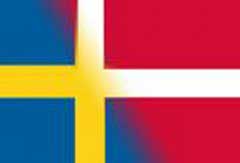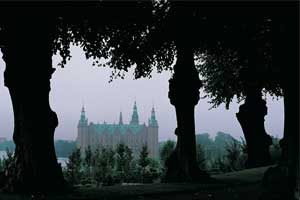On this trip we explore The Danish history seen through of our drinking traditions. Isn’t that a great idea? Well, we think so! Because it allows us to tell about the Vikings and their toast, the monks and their beer, the insatiable kings, the thirsty poor people as well as the explorers who brought new inspiration and tastes home from far away. On the way we visit castles where the cannon salutes accompanied the toasts of the king and his guests, and the numerous gorgeous dishes exhausted the appetite of the visitors. In the afternoon we visit a vineyard and taste some of the Danish white wines. Learn about the growing possibilities of wine making in our cool climate!
A Life fit for Kings
Renaissance life had a lot to offer a king who knew how to enjoy life. He was busy entertaining plenty of visitors in his impressive castles, humbly accepting their gifts. Travels, expensive robes and plenty of food and drink accompanied his official duties. Well, actually much more food than anyone could eat! He also spent time going from one castle to the other with a circus of wagons with all his staff and expensive belongings.
On this tour we drive along the coast north of Copenhagen to visit the most magnificent renaissance castles in North Zealand. The powerful legendary Kronborg and the elegantly decorated Frederiksborg.
Frederiksborg Castle
Today Denmark is quite a small country, but in the 17th century the Danish King belonged to one of the richest and most powerful dynasties in renaissance Europe. You realize this in the moment you enter the court of Frederiksborg Castle. This is the place where the young prince Christian 4th grew up. The architecture is state of the art of it’s time and the interior lavish and glamorous. The scene of everyday life at the Danish Court. And Christian was for sure a man who knew to appreciate all the possibilities and luxury he had within reach. Hunting, eating, drinking, meeting yet another woman and waging yet another not every successful war. Highlights are the Audience Hall and the impressive Knights Hall where the royals hosted parties lasting days!
Kronborg Castle
Another spectacular attraction is of course Kronborg Castle, beautifully located on the coast and with a splendid look to Sweden. This is the home of Shakespeare’s Hamlet, and since 2000 on UNESCO’s World Heritage list. The coast of today’s Sweden is so close that is not difficult to imagine that this was bound to a place of strategic importance. Here Denmark showed it’s strength in the nation’s defense. From the fortress you could see the enemy approaching and be ready. At the same time Kronborg and the control of the strait meant that the King could make a fortune collecting sound dues from every ship that asked to pass through the narrow strait to the Baltic Sea. This privilege as tax collector lasted almost 400 years and was of key importance to the kingdom’s wealth and influence in Europe.
Hear about the importance of this place in Danish and European history, and find out why Shakespeare chose this location for his story of Hamlet. As a matter of fact he was never here himself!
Wine tasting at a vineyard – try tasting the Danish wine
What better way to end the tour than to stop at a vineyard for a wine tasting in beautiful surroundings. We meet the enthusiastic and highly professional wine makers who have entered into this relative new business of producing wine in Denmark for sale to a wider audience. Some of them you can find in the high end Nordic cuisines restaurants in Copenhagen. Others are so small in circulation that you have to visit the producer to find it. Due to climate change, the development of new sorts of grapes and hard work, the image of Danish wines is rapidly growing. But see for yourself!
This is where we end our journey through Danish drinking traditions and centuries of history . When you finish you have of course also heard the dramatic story of Carlsberg – our world famous beer brewer, Mister Jacobsen and how he started the tradition of producing a beer setting a whole new standard.
SKÅL! O, yes, we will also tell you about the origins of this salute.


